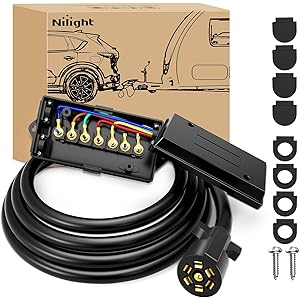When I first moved into my mobile home, I was enamored by the cozy charm it exuded. However, as time passed, I noticed that the cabinets were dull, outdated, and didn’t quite match my aesthetic. I was left wondering: Can I paint mobile home cabinets? After extensive research, countless trials, and a bit of elbow grease, I can confidently say yes! Painting cabinets can be a transformative project that breathes new life into your space. In this article, I’ll share my journey, tips, techniques, and everything you need to know to embark on this rewarding DIY adventure.
Why Paint Mobile Home Cabinets?
Before diving into the how-to, let’s explore the reasons why painting mobile home cabinets is not just possible, but also a fantastic idea:
- Cost-Effective Transformation: Replacing cabinets can be a financial burden. Painting offers a budget-friendly alternative that can yield stunning results.
- Endless Customization: You can choose colors and finishes that reflect your personality and style, turning your kitchen or bathroom into a space you love.
- Quick Project: Compared to a full remodel, painting cabinets is a relatively quick project that can usually be completed in a weekend.
- Increased Home Value: Freshly painted cabinets can enhance the overall appeal of your mobile home, potentially increasing its market value.
Choosing the Right Paint for Mobile Home Cabinets
Not all paints are created equal, especially when it comes to cabinets. Here’s what I learned about selecting the right paint:
- Type of Paint: For cabinets, I highly recommend using a high-quality acrylic or latex paint. These paints are durable and easy to clean, making them ideal for kitchen and bathroom environments.
- Finish Matters: Opt for a semi-gloss or satin finish. These finishes are not only easier to clean but also provide a beautiful sheen that enhances the cabinets’ appearance.
- Color Choice: Light colors can make a space feel larger and brighter, while dark colors add warmth and sophistication. Choose a color that complements your overall design theme.
Preparing for Your Painting Project
Preparation is key to a successful painting project. Here’s how I prepared my cabinets:
- Clear the Space: Remove all items from the cabinets and clear any nearby surfaces. This not only gives you space to work but also protects your belongings.
- Clean the Cabinets: Use a degreaser or a mix of warm water and mild soap to clean the cabinets thoroughly. This step is crucial for ensuring that the paint adheres properly.
- Sand the Surfaces: Lightly sand the cabinet surfaces with fine-grit sandpaper. This helps the paint stick better and creates a smoother finish.
- Fill Any Holes: If your cabinets have any chips or dents, use wood filler to repair these areas and sand them smooth once dry.
- Prime the Cabinets: Applying a primer is essential, especially if you’re painting over a dark color or laminate. A good primer helps the paint adhere and provides a uniform base.
Step-by-Step Painting Process
Now that I was prepared, it was time to get painting. Here’s the step-by-step process I followed:
Step 1: Gather Your Supplies
Before starting, I made sure I had all the necessary supplies:
- High-quality paint (acrylic or latex)
- Primer
- Paintbrushes (angled for corners and a foam roller for large areas)
- Drop cloths
- Painter’s tape
- Sandpaper
- Clean rags
- Wood filler (if necessary)
Step 2: Apply the Primer
With everything in place, I started by applying a coat of primer. Using a brush for the edges and a roller for flat surfaces, I ensured even coverage. After letting it dry for the recommended time, I lightly sanded the surface again for an ultra-smooth finish.
Step 3: Paint the Cabinets
Once the primer was dry, it was time for the fun part—painting! I applied the first coat of paint using the same technique: brush for edges and roller for larger areas. I was amazed at how quickly the transformation began. After the first coat dried, I evaluated the coverage before deciding to apply a second coat for a richer color.
Step 4: Finishing Touches
After the final coat dried, I removed the painter’s tape carefully to avoid chipping the paint. I then reattached any hardware, and voila! My cabinets looked brand new.
Tips for a Successful Cabinet Painting Project
Throughout my experience, I learned several tips that can help others achieve a successful cabinet painting project:
- Patience is Key: Allow each coat to dry thoroughly before applying the next. Rushing can lead to drips and uneven surfaces.
- Consider the Weather: If you’re painting indoors, ensure good ventilation. Avoid painting during high humidity or extreme temperatures, as these can affect drying times and paint adhesion.
- Use Quality Tools: Investing in high-quality brushes and rollers can make a significant difference in the final finish.
- Test Colors: Before committing to a color, try samples on a small section of the cabinet or a piece of cardboard to see how it looks in different lighting.
Transformations to Inspire You
Seeing is believing! Here are a few examples of amazing transformations I found while researching this topic:
- From Drab to Fab: One homeowner transformed their dark wood cabinets into a bright white, modern kitchen that looked like it belonged in a magazine.
- Bold and Beautiful: Another painted their cabinets a vibrant teal, creating a stunning contrast with white countertops and a neutral backsplash.
- Classic Elegance: A simple gray paint gave a dated kitchen an elegant, timeless feel, proving that neutral doesn’t have to mean boring.
Common Mistakes to Avoid
As with any DIY project, there are pitfalls to watch out for. Here are some common mistakes I encountered and how to avoid them:
- Skipping the Primer: This can lead to poor adhesion and uneven color. Always prime your cabinets!
- Not Allowing Enough Drying Time: I learned the hard way that patience is crucial. Ensure each layer is completely dry before moving on to the next.
- Choosing the Wrong Paint Finish: High-gloss finishes can show imperfections, while matte finishes may not withstand wear and tear. Choose wisely!
Aftercare for Painted Cabinets
After investing time and effort into painting your cabinets, it’s important to know how to care for them:
- Clean Gently: Use a soft cloth and mild cleaner to avoid damaging the paint.
- Avoid Harsh Chemicals: Stay away from abrasive cleaners that can scratch the surface.
- Touch Up as Needed: Keep a small amount of paint for touch-ups in case of chips or scratches over time.
Frequently Asked Questions
Can I paint laminate cabinets?
Yes, you can paint laminate cabinets! Just make sure to thoroughly clean and sand them before applying a primer, as this will help the paint adhere better.
How long does the paint last on cabinets?
With proper preparation and care, painted cabinets can last anywhere from 5 to 10 years or more before needing a touch-up.
What tools do I need for painting cabinets?
You’ll need brushes, rollers, primer, paint, sandpaper, painter’s tape, and drop cloths. Quality tools can make a significant difference in the outcome.
Conclusion
Painting mobile home cabinets is not only feasible but rewarding, as I discovered through my journey. With careful preparation, the right materials, and a bit of creativity, you can transform your space from drab to fab. Whether you’re looking to refresh your kitchen or bathroom, this DIY project can significantly enhance your home’s aesthetic and value. Don’t shy away from tackling this project—embrace it! If you found this article helpful, consider signing up for our newsletter for more tips and tricks. Share your transformations with friends and on social media, and let’s inspire others to take on their own cabinet painting adventures!
Nilight Heavy Duty 7 Way Inline Trailer Plug 8 Feet Connector Cable 7Pin RV Round Extension Wiring Harness Weatherproof Junction Box for RV Towing Car
$32.39 (as of November 15, 2025 07:52 GMT -03:00 - More infoProduct prices and availability are accurate as of the date/time indicated and are subject to change. Any price and availability information displayed on [relevant Amazon Site(s), as applicable] at the time of purchase will apply to the purchase of this product.)
Sign up for our newsletter and stay up to date with exclusive news
that can transform your routine!





